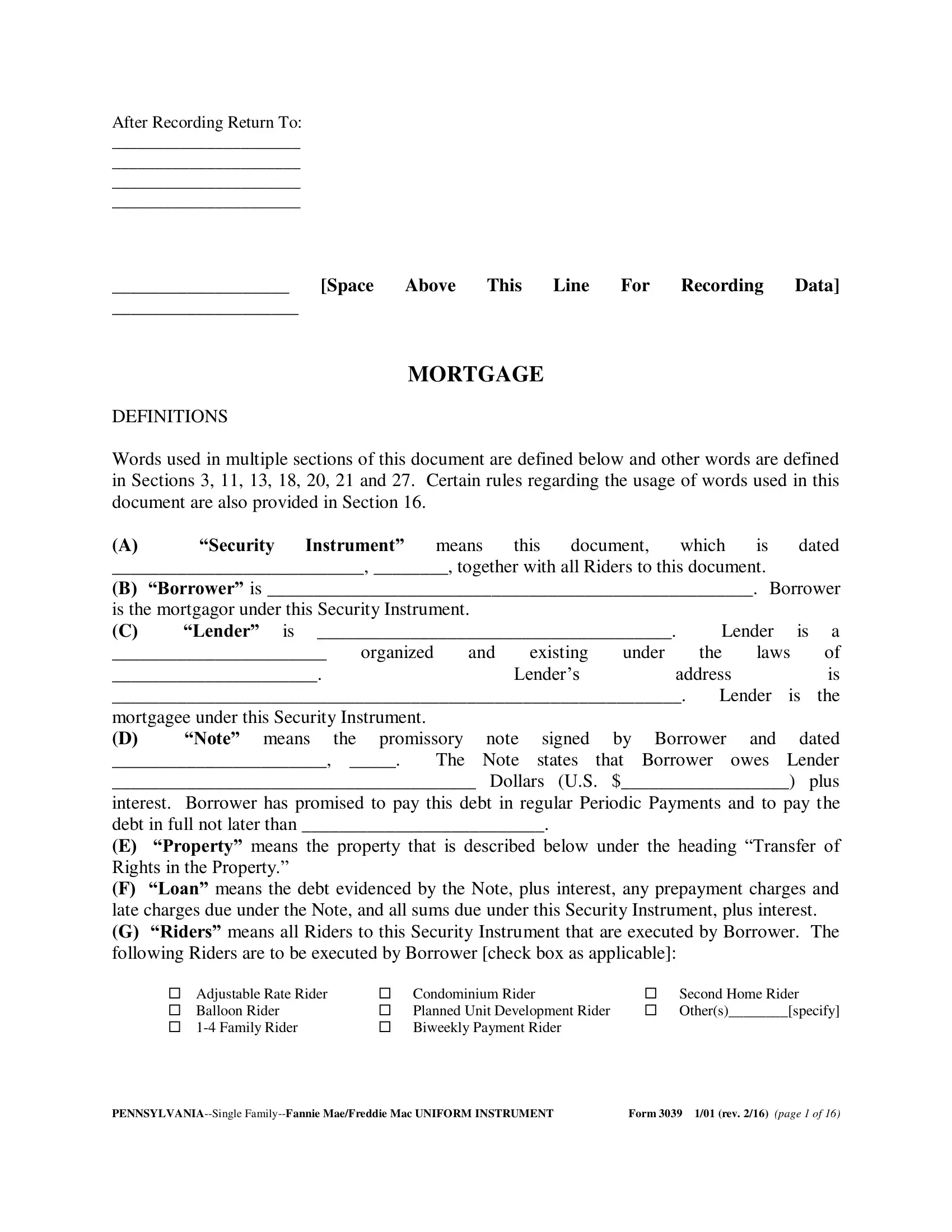Dealing with PDF documents online can be super easy with this PDF tool. You can fill out pa note fillable 3039 here without trouble. The editor is constantly maintained by our team, getting handy functions and turning out to be better. It merely requires just a few easy steps:
Step 1: First of all, access the pdf tool by pressing the "Get Form Button" at the top of this webpage.
Step 2: The editor gives you the opportunity to modify your PDF form in a range of ways. Transform it with customized text, adjust what's originally in the PDF, and add a signature - all within a couple of mouse clicks!
This form requires some specific information; in order to ensure consistency, please make sure to heed the next steps:
1. It's very important to fill out the pa note fillable 3039 properly, thus be careful when working with the parts that contain these blank fields:
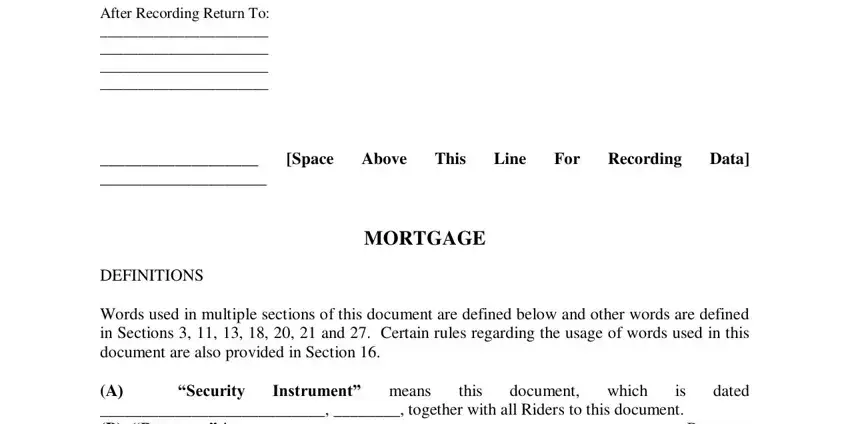
2. After the previous part is completed, go on to type in the relevant information in all these: organized, and, under, Lender, DEFINITIONS Words used in multiple, Lender the address, Note means, existing Lenders, the promissory, note, signed, by Borrower, The Note states, laws, and a of is the.
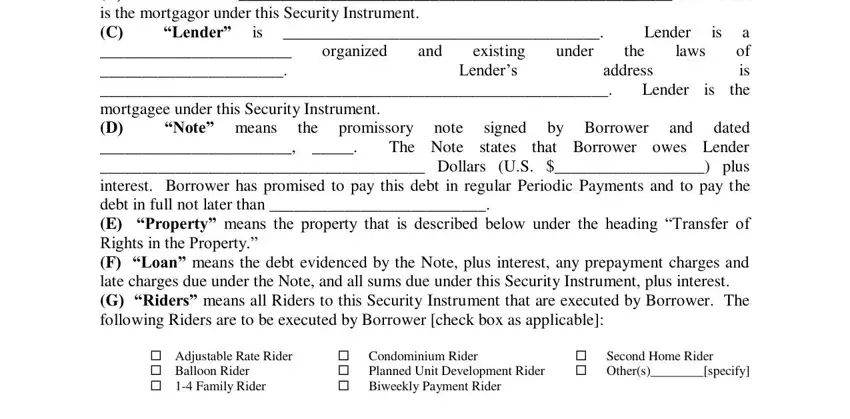
3. The third stage is hassle-free - fill in all the empty fields in Type of Recording Jurisdiction, TRANSFER OF RIGHTS IN THE PROPERTY, Pennsylvania Property Address, Street, City, Zip Code, and TOGETHER WITH all the improvements to complete this part.
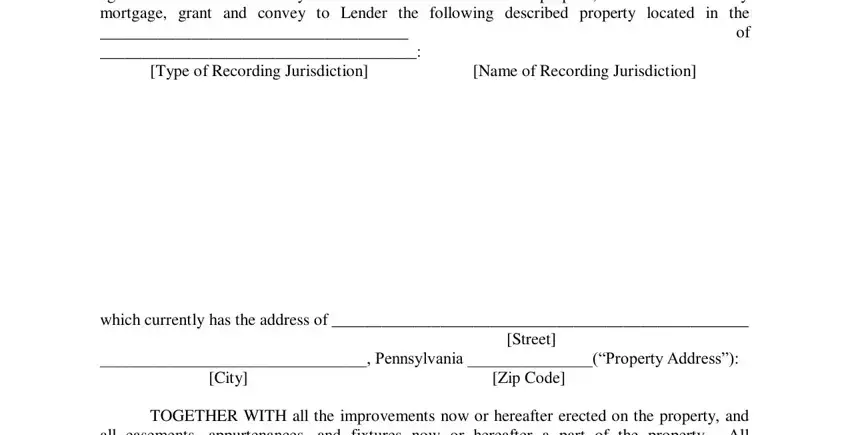
4. This fourth paragraph arrives with these particular empty form fields to fill out: BY SIGNING BELOW Borrower accepts, Seal Borrower, Seal Borrower, PENNSYLVANIASingle FamilyFannie, and Form rev page of.
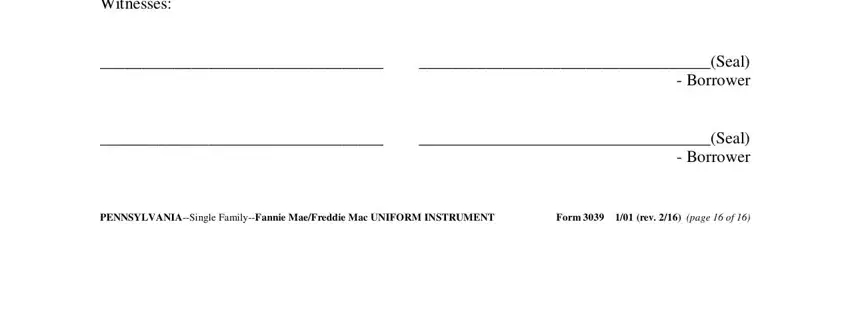
5. As a final point, this final part is what you'll want to complete before using the document. The fields at issue are the next: Space, Below, This, Line, For, and Acknowledgment.
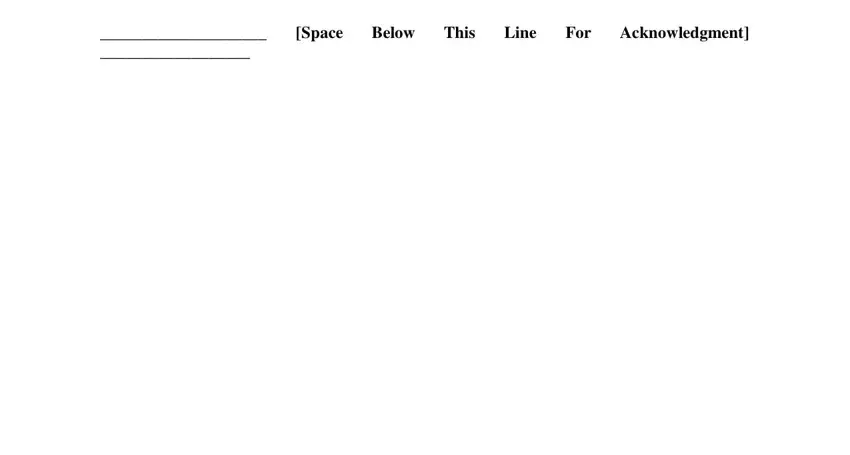
People generally make mistakes while filling in Acknowledgment in this part. You should revise what you type in right here.
Step 3: Right after you've reread the information entered, simply click "Done" to finalize your document creation. Get your pa note fillable 3039 once you register here for a 7-day free trial. Easily access the form within your FormsPal account page, together with any modifications and changes being automatically kept! FormsPal guarantees safe form editor without data record-keeping or any kind of sharing. Be assured that your details are secure with us!
